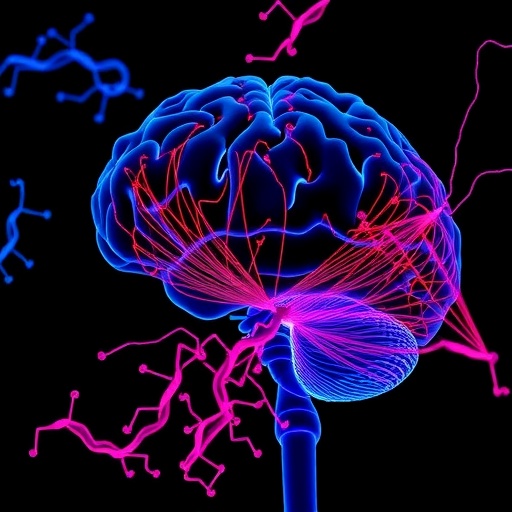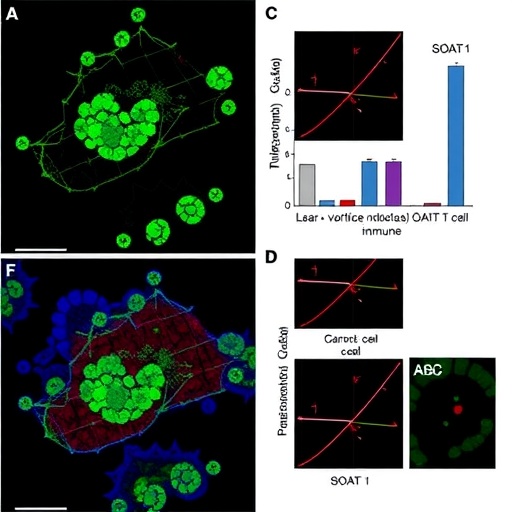In a groundbreaking study published in Nature Neuroscience, researchers have unraveled the neural mechanisms underpinning a well-known but poorly understood motivational phenomenon: behavior-specific fatigue. This occurrence—where repeated experiences lead to a diminished drive toward the same behavior—has been challenging to dissect due to its inherent complexity. By leveraging the genetic and behavioral tractability of Drosophila melanogaster, the common fruit fly, scientists have mapped the intricate dopamine signaling pathways that regulate persistent mating efforts, revealing a sophisticated interplay between neurotransmitter activity and receptor desensitization.
The study illuminates how prior mating experiences can lead male flies to become increasingly likely to abandon subsequent matings when faced with typical environmental challenges or distractions. This behavioral shift is linked to a finely tuned decrease in motivational vigor, mediated by local changes in dopamine receptor sensitivity. Dopamine, a crucial neuromodulator long associated with motivation and reward, signals through the D2-like receptor (D2R) in the fly brain to help sustain mating efforts in adversity. Yet, with repeated mating attempts, this signaling pathway undergoes a form of local resistance, translating into what the researchers describe as devaluation of the mating behavior.
One of the central findings centers around the copulation decision neurons (CDNs)—a specific neuronal population critical for maintaining mating engagement. Dopamine acts through the D2R to inhibit the output of these neurons, thereby promoting resilience to behavioral interruptions. Importantly, when the dopaminergic signal is robust, the CDNs remain suppressed, enabling the male to persevere through potential distractions or threats. However, following repeated mating experiences, the CDNs become hypo-responsive due to a process of receptor desensitization, leading the flies to abandon matings prematurely, a clear demonstration of motivational fatigue.
This receptor desensitization hinges on β-arrestin-dependent mechanisms, a well-characterized pathway through which G protein-coupled receptors (such as D2R) lose sensitivity to continuous or excessive ligand exposure. By recruiting β-arrestin, the D2 receptors on the CDNs undergo conformational changes and internalization, rendering them temporarily less responsive to dopamine. This adaptive neurochemical shift effectively dampens the motivational drive without affecting dopamine release itself, illustrating a form of local resistance that fine-tunes behavior according to experience.
The implications of this resistance mechanism extend far beyond flies. The D2R is notorious for its susceptibility to desensitization in mammalian systems and has been extensively studied in the context of drug addiction and neuropsychiatric disorders. The current findings provide a natural function for this vulnerability, showcasing it as a biological strategy to prevent overinvestment in repeated behaviors that may become less rewarding with experience. This dynamic offers a powerful example of how neural circuits balance persistence and flexibility, preventing exhaustion or maladaptive compulsivity.
Experimentally, the researchers employed sophisticated genetic tools available in Drosophila to manipulate receptor sensitivity on the CDNs directly. By preventing β-arrestin-mediated desensitization, flies retained a persistent dopamine responsiveness even after multiple matings. These males essentially treated every copulation as their first, ignoring the usual fatigue-induced decline in mating resilience. This manipulation not only highlights the sufficiency of local receptor desensitization in driving behavioral devaluation but also opens avenues for exploring similar circuit adaptations in other motivational contexts.
Beyond the fundamental neural insights, this work enriches our understanding of motivational dynamics as a form of behavioral economy. Motivation is not static; rather, it ebbs and flows according to internal states and past experiences. By revealing the cellular and molecular substrates of behavior-specific fatigue, the study bridges the gap between fleeting motivational states and longer-term behavioral adaptations, emphasizing the critical role of dopamine signaling fine-tuning within core decision-making neurons.
Further, the research underscores how local circuits can wield autonomy in shaping complex behaviors. Instead of a global decline in dopamine levels driving fatigue, modulation occurs at the receptor level within precisely targeted neuron populations. This specificity allows for nuanced regulation, maintaining dopamine’s myriad functions in other neural systems while adjusting motivation contextually.
In addition, the findings raise intriguing questions about how motivational states generalize or remain behavior-specific. The localized resistance mechanism implies a capacity for discrete modulation, whereby distinct behavior circuits can independently calibrate dopamine responses based on their own loading history. This modularity likely confers adaptive advantages, allowing organisms to flexibly allocate effort across multiple competing drives without uniform global fatigue.
The study also invites reconsideration of the enduring mystery surrounding dopamine’s dual roles in motivation and behavioral inhibition. Here, the inhibitory effect of dopamine on CDN activity paradoxically sustains vigorous mating behavior. This counterintuitive action highlights the complexity of neurotransmitter influence, which depends heavily on receptor subtypes, cellular context, and network wiring—components now better understood through this nuanced example.
Moreover, these mechanistic insights have translational relevance. Dopamine dysregulation is implicated in disorders ranging from depression to Parkinson’s disease, where motivation-related symptoms often manifest. Understanding natural receptor desensitization pathways could inform new therapeutic strategies aimed at restoring motivational balance by modulating receptor sensitivity rather than merely dopamine availability.
Intriguingly, the study demonstrates a powerful biological example of experience-dependent plasticity beyond classical synaptic modification. Instead of altering synaptic strength or connectivity, experience sculpts receptor sensitivity at the molecular level, providing a flexible yet reversible modulation of circuit output. This mode of plasticity may represent a widespread and underappreciated mechanism regulating behavioral inertia and change.
From a technical perspective, the integration of behavioral assays with cutting-edge genetic and optogenetic manipulations in Drosophila enabled precise dissection of these processes. The study’s powerful combination of longitudinal mating trials, dopamine manipulations, and receptor biochemistry underscores the fruit fly’s continuing value as a model for neuroethological research, enabling discoveries with broad impact on neuroscience and biology.
In summary, this innovative research describes how repeated mating experiences in male Drosophila lead to a dopamine receptor desensitization process that locally diminishes receptor responsiveness in specific decision neurons. This alteration results in behavior-specific fatigue, causing males to reduce mating persistence when challenged. Prevention of this receptor desensitization abolishes motivational decline, treating each mating as novel. These findings unveil fundamental principles governing motivation regulation, highlighting dopamine receptor dynamics as key modulators in behavior-specific fatigue and adaptation.
This landmark study not only untangles a longstanding puzzle in motivational neuroscience but also provides a framework for exploring how local signaling resistances shape diverse behaviors. Its revelations resonate across species and behavioral domains, opening an exciting new frontier in understanding the neural calculus of motivation, fatigue, and persistence.
Subject of Research: Dopamine signaling and receptor desensitization in motivational fatigue during mating behavior in Drosophila.
Article Title: Behavioral devaluation by local resistance to dopamine.
Article References:
Miner, L.E., Gautham, A.K. & Crickmore, M.A. Behavioral devaluation by local resistance to dopamine. Nat Neurosci (2025). https://doi.org/10.1038/s41593-025-02079-x
Image Credits: AI Generated
DOI: https://doi.org/10.1038/s41593-025-02079-x
Tags: behavioral devaluationbehavioral fatigue in matingcopulation decision neuronsdopamine receptor sensitivityDrosophila melanogaster researchenvironmental challenges and matinggenetic and behavioral tractability in neurosciencelocal dopamine resistancemotivation and reward mechanismsneural mechanisms of motivationneurotransmitter activity in fliespersistent mating efforts in flies





